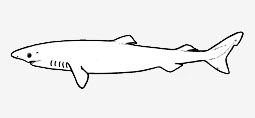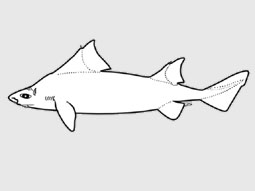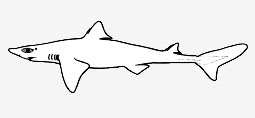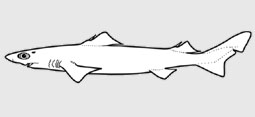
Centrophoridae - (Gulper sharks)
Distribution: Atlantic, Indian and Pacific Ocean, in warm temperate to tropical waters. Both dorsal fins with grooved spines; teeth on lower jaw larger than those on upper jaw; precaudal pits and lateral keels absent on caudal peduncle. Ovoviviparous, embryos feed solely on yolk (Ref. 50449). Suggested new common name for this family from Ref. 58418.
Distribution: Antarctic to Arctic, Northern and Southern Hemisperes, coastal and oceanic. Includes four subfamilies (Etmopterinae, Somniosinae, Oxynotinae, and Dalatiinae). Except in Etmopterinae , most members without spines in dorsal fin; luminous organs present (except in Somniosus pacificus), appearing as black dots mainly on ventral surface. Etmopterinae has grooved spines in both dorsal fins, caudal fin with subterminal notch. Oxynotinae has very high, and compressed body, triangular in cross section; dorsal fins very high, each with a spine (Ref. 557). The subfamilies are sometimes separated as independent families by various authors: Oxynotidae (Ref. 247); Somniosidae (dorsal fins without spines, first dorsal fin originating in front of pelvic fins but much closer to pectoral fins) and Etmopteridae (dorsal fin with spines, teeth with prominent central cusp flanked by one or two smaller cusplets) (Ref. 48844) . Dalatiidae has dorsal fins without spines, first dorsal fin originating in front of pelvic fins but much closer to pelvic fins (Ref. 48844).
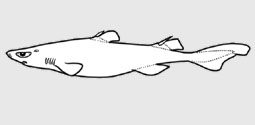
Etmopteridae - (Lantern sharks)
Occurring in some parts of the Atlantic (extending north to Iceland), Indian and the Pacific. Tropical to temperate, continental and insular slopes, rarely on shelves; a few are oceanic. Both dorsal fins has grooved spines; caudal fin with subterminal notch; luminous organs usually present on body. Small sharks with maximum length under 90 centimeters in most species.
Continental and insular shelves and slmopes; eastern Atlantic (including Mediterranean), western Atlantic, and western Pacific. Body very high and compressed, triangular in cross section; dorsal fins very high, each with a large spine that may be concealed by the fin; origin of first dorsal fin may extend far forward over gill opening; lateral ridge present on abdomen between pectoral and pelvic fins; skin very rough; luminous organ present.
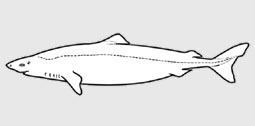
Somniosidae - (Sleeper sharks)
Arctic to sub-antarctic, all oceans; shelves in cold waters, continental and insular slopes in temperate and tropical waters, some oceanic. Dorsal fins usually without spines (present in a few species but small and in both fins); lateral ridges present on abdomen between pectoral and pelvic fins; luminous organ present in most.
Distribution: Temperate. Northern and Southern hemispheres (Atlantic, Indian and Pacific.
Habitat: Juveniles are pelagic, becoming benthic as they mature.
Morphology: Two dorsal fins, each with a spine at the front; teeth on lower jaw not much larger than those on the upper jaw; upper precaudal pit usually present in most species; caudal peduncle with a pair of lateral keels.
Reproduction: Ovoviviparous; females gestating eggs and yolk-sac embryos in the uterus and producing litters of up to 20-32 pups,usually averaging 2-12 pups (number of pups increasing with size of the female); long gestation period, 18-24 months.
Maturity: delayed
Note: Families with unknown counts of dorsal or anal spines are also included
